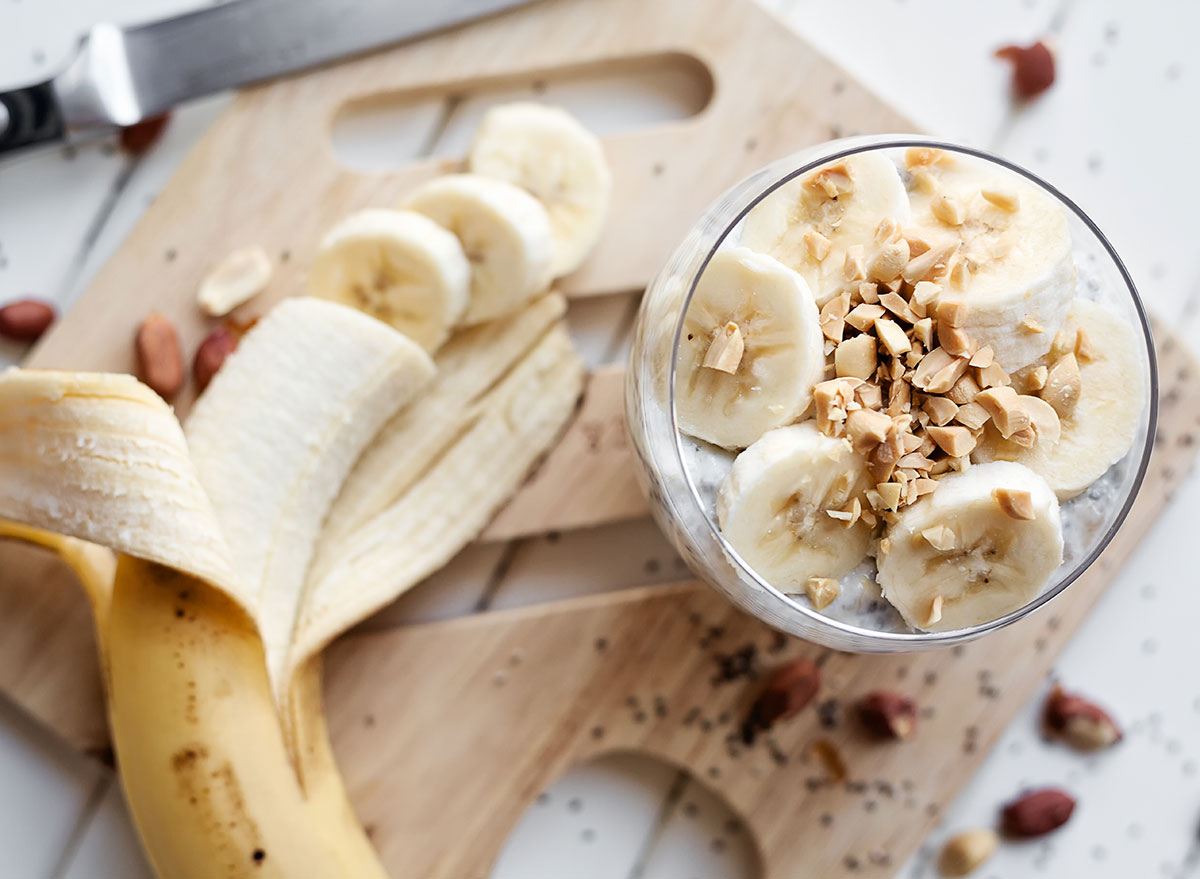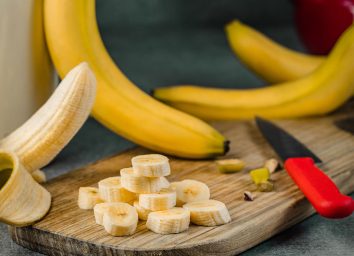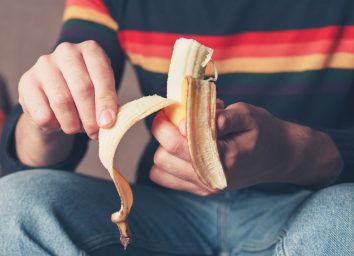One Surprising Side Effect of Eating Bananas, According to Science

While bananas are known for providing your body with all kinds of health benefits—particularly the boost in potassium—it's not the only surprising side effect you'll experience while eating bananas. In fact, eating bananas can actually provide your body with a particular molecule that will help with your digestion and keep you feeling satiated: resistant starch!
Here's why having resistant starch in your diet matters, and for more healthy tips, be sure to check out our list of The 7 Healthiest Foods to Eat Right Now.
What is resistant starch?
Resistant starch is the new cool kid on the carbohydrate block. It lowers blood sugar after meals, feeds good bacteria in the gut microbiome, and aids in weight loss by slowing digestion to keep us full longer.
Resistant starches are part of a greater category of low-digestion carbohydrates (LDC): these are carbs that do not get fully digested. Other LDCs include fiber and sugar alcohols. In fact, some research has shown due to lack of absorption, foods high in resistant starch provide half the calories of their conventional starchy counterparts!
Resistant starch is a type of carb that functions more like fiber than carbohydrate. This starch earns its name as it truly "resists" digestion through its tough outer wall. This resistance to digestion plays a noteworthy role in appetite and has downstream effects on appetite and blood sugar.
"Resistant starch is not digested and passes through the GI tract unchanged where it acts as a prebiotic and soluble fiber," says Kate Gerweck, MS, RD, LD. "The resistant starch in bananas has been studied in relation to bowel health and has been shown to significantly improve stool quality, reducing reports of painful, cracked, or hard stool, improved frequency of bowel movements, and reduction in medication use."
Typically, the cook-and-cool method helps to create the beneficial resistant starch. For example, cooked potatoes will not provide resistant starch. However, cooking and cooling potatoes—safely, in the fridge, overnight—will form resistant starch. Bananas are distinct in that there is no cooking required to reap their resistant starch benefits!
You get more resistant starch when eating greener bananas.
Bananas are unique in that they must be eaten when they are still green to reap the benefits of their resistant starch content. Green bananas leave a chalky residue taste – this is the aftertaste of resistant starch! As a banana becomes more yellow or develops brown dots, its starch content has declined and has been replaced with sugars. Brown bananas infamously make good banana bread for this reason! While it may suit some of us to eat a plain green banana, we can easily mask the chalky flavor by incorporating it into a smoothie, like how we throw bananas in a few of these 27 Best Immune-Boosting Smoothie Recipes.
Did you know you can also keep your bananas greener with this Simple Trick That Keeps Bananas Fresh?
How does resistant starch improve health?
There are three main body processes that researchers have found are positively affected by resistant starch. The first is blood sugar control and insulin resistance.
"Resistant starch is the most underrated ingredient in a blood sugar diet," says Kelly Schmidt, RD. "Resistant starches should be emphasized as its benefits support wellness at its core for gut health but also insulin sensitivity."
Because about half of the carbohydrates in resistant starch do not get digested, they never make it to the bloodstream to spike blood glucose! If you have been diagnosed with diabetes or insulin resistance, then you may benefit from incorporating this magical molecule into your diet! Research has shown that including up to 40 grams of resistant starch per day can improve insulin sensitivity in individuals with metabolic syndrome!
The second emerging area of research on resistant starch includes its effects on the gut microbiome. This four-trillion large army of bacteria live in the GI tract and dictates much of the metabolic health including weight loss, hunger signals, and cravings.
The best way to create a healthy gut microbiome is to eat foods that increase the diversity of healthy bacteria in our gut. These are referred to as prebiotic foods. Prebiotics feed the good bugs in our gut, helping them grow over time, and thus outnumber the bad. This balance can be created by including foods rich in resistant starch!
"The resistant starch in a banana acts as a prebiotic, which means it feeds the good bacteria. Improved gut bacteria balance has been linked to improved blood sugar levels," says Lacy Ngo, RD MS.
The third way that resistant starch contributes to health is by controlling appetite. As this starch resists digestion, it simultaneously slows down stomach emptying. This prolongs our hunger signals for hours after eating a meal or snack high in resistant starch. Choosing foods that take a long time to digest will keep us full for hours and help us make better choices at our next meal and overall, reducing our total daily caloric intake.
So to sum it all up, eating foods high in resistant starch keeps us full for longer, has a whooping half the calories of other carbohydrates, and may reduce our overall calorie consumption in a day? Sounds like a magic trick for weight management.
Whether you're trying to control your waistline, get your gut in check, or improve your metabolic health, this little-known starch can help you reach your goals! If you are wondering how you can incorporate more resistant starch into your diet, check out these 20 resistant-starch recipes.








